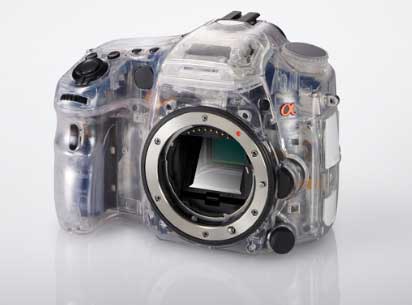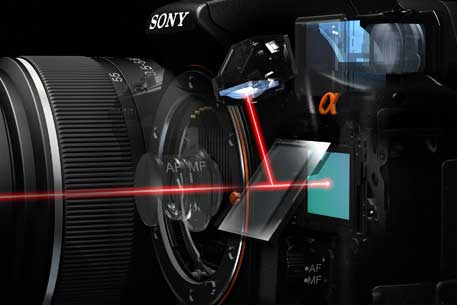Even if you only have the most rudimentary knowledge of photography and are content with your compact digital camera, there’s a strong chance that you’ve heard of DSLR cameras. For more than a decade they have generally been considered to be at the top of the pile in terms of camera technology. However, due to a recent innovation by technology giants, Sony, there’s a brand new acronym in town looking to claim the title of ‘camera of choice’ for itself – the SLT.
What’s the difference? Where’s the innovation? Well, part of the story is in the name: DSLR stands for digital single lens reflex; SLT for single lens translucent. Forgetting the omission of ‘digital’, the key difference lies in the use of the term ‘translucent’, rather than ‘reflex’, which in both cases refers to a mirror used inside the camera.
In the case of the DSLR, the mirror reflects light up into the viewfinder and then, once the shutter button is pressed, it lifts out of the way to allow the photograph to be taken, hence the ‘reflex’.
In the case of the SLT, however, the mirror is translucent, so it allows light to travel directly through it for the picture, with only a small amount being reflected for use in the camera’s autofocus system, thus eliminating the need for internal movement of the mirror.
This means three things primarily: firstly, less of a time delay between pressing of the shutter button and the actual photo being taken, so photos are practically instant and can be taken in more rapid succession. Secondly, the lack of movement inside the camera reduces shake and blur, meaning sharper images.
However, the third difference associated with the translucent mirror is that invariably a small quantity of light is absorbed by the mirror, which ultimately means that less light finds its way through to the sensor – so certain shots, in low light for example, may lack a degree of clarity and definition.
The technology behind SLT cameras is certainly promising and impressive, although still in its early days, so it’s perhaps no surprise that many professional photographers continue to use traditional DSLRs. The jury is still out in terms of which camera type is superior, but can we certainly think both can co-exist?








